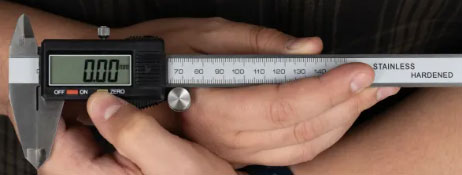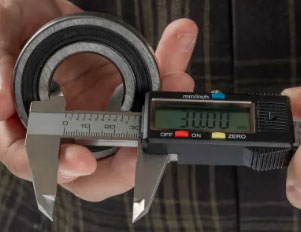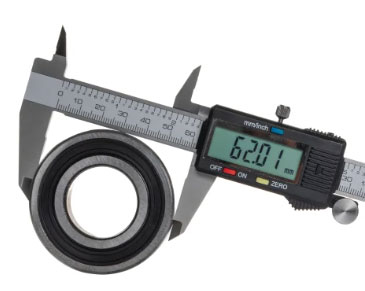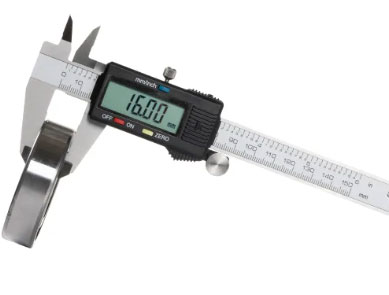
Bearings are essential components in machinery, allowing for smooth rotational or linear movement while reducing friction. When replacing a bearing, it's crucial to measure it accurately to ensure the correct fit. This guide will walk you through the key steps to measure a bearing correctly.
Tools Required:
- Vernier caliper or micrometer
- Measuring tape (for larger bearings)
- Notepad and pen for recording dimensions
Prepare you equipment

Zero or calibrate your digital calliper or micrometer according to the manufactures instructions.
Key Measurements:
The dimensions of bearings (bore, outer diameter, width) are internationally standardised. The size of a bearing has to be known for its installation on a shaft and in a housing. (Refer to Bearing dimensions)

1. Inner Diameter (ID) or Bore Diameter:

- The bore diameter refers to the internal opening of the bearing, where the shaft is inserted.
- Insert the caliper jaws inside the bearing’s bore.
- Expand the jaws until they touch the inner walls.
- Take the reading and record it.
2. Outer Diameter (OD):

- Place the bearing on a flat surface.
- Use a caliper to measure the maximum external width across the outer race.
- Record the measurement in millimeters or inches.
3. Width (W) or Thickness:

- Position the caliper across the bearing’s side.
- Measure the overall thickness of the bearing.
- Note the measurement.
Fit Considerations:
- Loose Fit vs. Tight Fit: Depending on the application, the bore diameter may require either a loose fit or a tight fit with the shaft.
- A loose fit allows for easy assembly and disassembly, often used when the bearing needs to move freely on the shaft.
- A tight fit (interference fit) ensures the bearing remains securely in place, preventing slippage, which is crucial for high-speed or high-load applications.
- The correct fit can be achieved by selecting the right shaft tolerance and using techniques like heating the bearing for expansion or cooling the shaft for contraction before assembly.
Additional Considerations:
- Bearing Type: Identify the type of bearing (e.g., ball bearing, roller bearing, tapered bearing) as it influences replacement selection. Please refer to the following
- Seal Type: Bearings may have rubber seals or metal shields, which should be noted for compatibility.
- Manufacturer’s Code: Many bearings have a reference number stamped on the outer ring. This number can help identify the exact replacement. Regarding bearing code mean, please refer to the following:
Conclusion:
Accurate measurement of a bearing’s outer diameter, inner diameter (bore diameter), and width is essential for selecting the correct replacement. Using precise tools like calipers ensures reliable results. When in doubt, consult a bearing supplier or manufacturer for further guidance.

